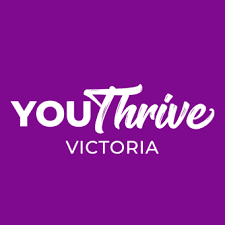Insync disrupts the board review and board survey sector
Insync disrupts the board evaluation and survey sector with transparent pricing, a simplified process, and a best practice framework.
Benchmarking board performance: 500 board reviews later
Unlock evidence-based insights into board performanceA fit-for-purpose board skills matrix will help you determine whether you have the right mix of skills, experiences and attributes or if there are important skill and experience gaps that need to be filled.
Talk to us todayIf you want a high–performance and highly effective board you better start by having the right composition of directors on your board. This includes having the right mix of skills and experiences for the current and future strategic needs of your organisation. It also means having the right diversity, behavioural attributes and ongoing renewal.
Developing a fit-for-purpose board skills matrix and keeping it up to date will help you determine whether you have the right mix of skills, experiences and attributes or if there are important skill and experience gaps that need to be filled. As the strategic needs of your organisation change then so will the skills and experiences needed by your board to oversee and add value to your organisation. This is why your board skills matrix needs to be continually adapted and evolved.
Most stock exchanges, securities commissions and prudential regulators have identified the importance of a board developing and adapting a board skills matrix that is fit-for-purpose and uniquely relevant to each organisation. Using an off-the shelf-template is no longer good enough. Shareholders and proxy advisors are also demanding that more rigour and sophistication be applied in developing and adapting board skills matrixes.
Good boards & governance structures also ensure that the bios of directors that are included on their organisation’s website are adapted to align well with their board skills matrix. Board effectiveness, director effectiveness and all manner of compliance, productivity and wellbeing based metrics tend to skew positive with increases in appraisal and action on results based data.
Insync has helped many boards to develop and/or to add rigour and sophistication to their board skills matrix. This has often involved taking some or all of the following steps to develop and/or adapt their board skills matrix. Several of these steps can be achieved by using Insync’s online board skills matrix survey.
The facilitation of a robust discussion with the board concerning its board skills matrix and any potential gaps in skills and experiences is invaluable in aligning the board around the skills and experiences needed for their next director appointment. Updating the Matrix as directors retire, including just before they step down, is equally important in aligning the board with any missing skills and experiences.
Being aware of the most common board skills matrix mistakes can help ensure that you don’t make those same mistakes too. Here are some of the most common mistakes we tend to see:
Click here for more client testimonials.


Insync completed a Board Benchmarking Survey for Youthrive Victoria in 2022 which was excellent in analysing what was going well and areas for improvement. I highly recommend Insync's survey for any board wanting to review its current effectiveness and identify how and where it could improve.
Insync disrupts the board evaluation and survey sector with transparent pricing, a simplified process, and a best practice framework.
ESG is a key factor in the sustainability of organisations. Learn how to create a framework to ensure your organisation is ESG compliant with Insync's insights.
Vision Super engaged Insync, with Board Benchmarking, to conduct reviews of its board & directors. Vision Super took 6 steps to become high performing.
Discover what a board skills matrix is and why it's crucial for effective corporate governance. Gain valuable insights for successful board membership.
We use cookies to enhance your experience. Further use is considered consent. You can read more about cookies in our Privacy Policy.


You’ll always get a real person when you contact Insync.
Let's get started